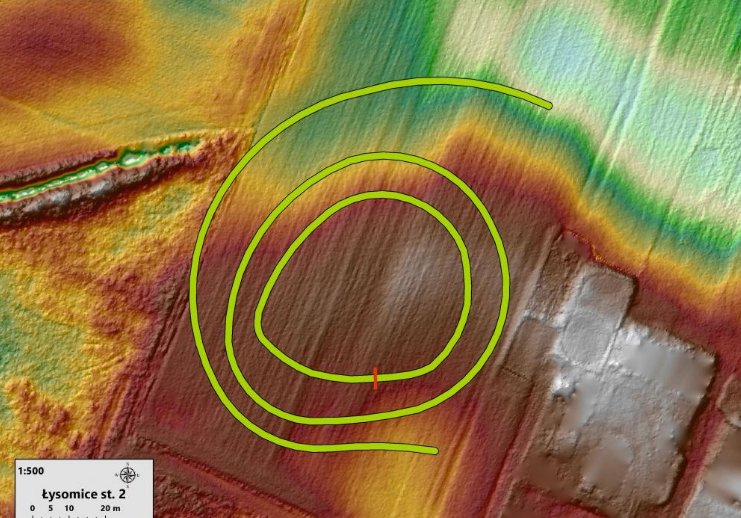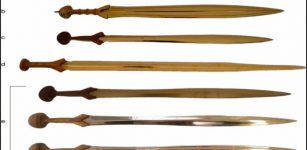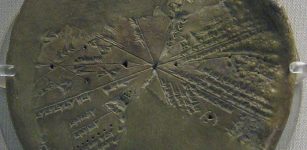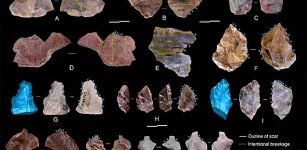Toruń Massive ‘Roundels’ Date Back 7,000 Years – Archaeologists Say
Jan Bartek - AncientPages.com - In the vicinity of Toruń that is one of the oldest cities in Poland, archaeologists discovered massive 7,000-year-old structures with a rounded or circular plan known as roundels. The roundels consisted of ditches up to 3m wide and 2m deep, according to archaeological study.
Massive 7,000-year-old structures with a rounded or circular plan known as roundels discovered near Toruń, Poland. Source
The enormous structures were revealed in 2019 by doctoral students Mateusz Sosnowski from the Institute of Archaeology of the Nicolaus Copernicus University and Jerzy Czerniec from the Institute of Archaeology and Ethnology of the Polish Academy of Sciences in Warsaw while analyzing data from Google Maps and Google Earth reports Science in Poland.
In arable fields in the Łysomice area, the researchers noticed outlines of two round structures approximately 85 m in diameter around 5 km from each other. They consist of a system of three oval ditches with a common center.
Interestingly, these types of buildings had not been found so far east of the Vistula River before.
Using a magnetometer, researchers could look underground without interfering with the surface. As a result, researchers reconstructed their course in places where they were not visible from a bird's eye view. They also started limited excavations with financial support from the Łysomice commune.
“We were able to determine that the ditches were approx. 2 m deep and 3 m wide, and their cross-section was V-shaped," Mateusz Sosnowski said.
"These were huge structures from about 7,000 years ago. They required the effort of dozens of people. Bone or horn tools were probably used to dig the ditches. Excavations were not easy either, even though we were certainly equipped with better tools than the roundel builders.”
Also, dozens of fragments of ceramic vessels were discovered at the site.
See also:
Huge 7,000-Year-Old Man-Made Structures Used For Religious Rituals Spotted In Poland
“Most of the shells we found belonged to the incised Linear Pottery culture community. It is a surprise for us because until now roundels were believed to be built by later communities, associated, among others, with the punctured Linear Pottery culture," explained Sosnowski, adding that "the roundel was probably built in the place of an earlier settlement, but it cannot be ruled out that the structure is older than we thought. Expert analysis will shed light on this issue.”
Animal bones and antler fragments were also discovered in the ditch, which they suspect came from rituals.
Roundels are the oldest examples of monumental architecture in Europe. Archaeologists believe that they served as ceremonial centers, temples, or places of assembly. Usually surrounded not only by concentric ditches but also palisades, the structures could also have a defensive function.
The archaeological site of the recent discovery is located in the vicinity of the old town Toruń, with the 11,000-year-old traces of human presence. These traces are located on the left bank of the Vistula River, in the current district of Podgórze, where there was a settlement of nomadic people.
During Europe's Neolithic Period, the population of the funnel bowl culture (4300 BC–c. 2800 BC) and the ball amphora culture (c. 3400–2800 BC) were mostly busy with farming and breeding. In the area of today's Old Town, there are traces of settlement of highly developed Lusatian culture.
So far, more than 130 have been located, a third of them in Austria. The remaining structures are in today's Hungary, Slovakia, Czech Republic, and Germany. In 2014, only three such structures were known in Poland. We currently know of approximately ten.
Written by Jan Bartek - AncientPages.com Staff Writer






















